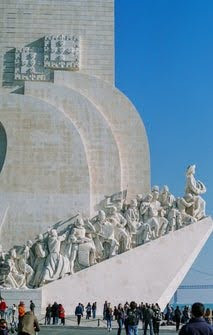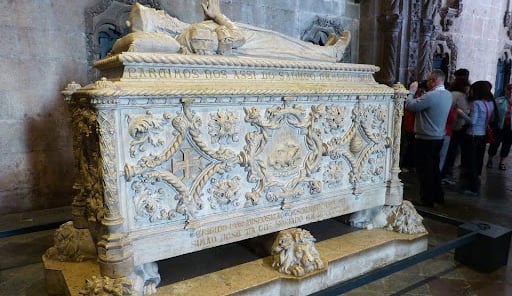

Lisbon, Portugal Travel - Castles, Monasteries, Cathedrals and Humanitarian Aid
Humanitarian aid to children in Lisbon. Then explore a romantic old world city standing proud among modern glass & glitz. History & traditions are still alive in Portugal. Walk the cobblestone streets and visit Saint George's Castle from the 1100's, tombs above ground in the Jeronimos Monastery, Commerce Plaza, Park of the Nations, and the Lisbon Cathedral. A bucket list must.
Ola (say: O-la) = Hello.
Obrigado (say: O-bri-gatho) = Thank you, if you're male.
Obrigada = Thank you, if you're female.
Um cafe = espresso coffee.
Meia de leite (say: may-a-de-leche = coffee with 1/2 milk.
Plan on spending 8-14 days. FYI: Lisbon was beyond our expectations. Tourist season is very crowded, from June thru August. Best times to visit are April-May and September-October. A bucket list must.
For more worldly travel, see: Swim with Turtles & Explore Mayan Ruins, Mexico
Rua = Street.
Onde e = (say: on-day) = Where is __? (fill in the blank).
Onde fico o banheiro = Where is the bathroom?
Km = kilometer, 1 km = .621 mile.
EUR = Euro, the European dollar. Check rates.
Portuguese Translations
Lisbon - Old World City
Lisbon, Portugal seamlessly blends ancient and modern in a romantic old-world city complete with cobblestone streets. The ancient stands proudly among the modern and the rich & colorful culture is steeped in traditions that are still observed today. The language is also romantic, somewhat like Spanish but flows with soft & sexy tone. Many speak 2 languages, Portuguese and English or Spanish.
While the atmosphere is more laid back in Lisbon, they totally adore their coffee. I'm not a coffee drinker, but once I tasted the smooth creaminess, I had to have my daily cup: meia de leite (coffee with milk). Food is also an integral part of the culture, sharing time together to cook & dine. Lunch is 2 hours long, and dinner usually starts after 8 pm.
You'll also see their national pastry pretty much everywhere, the Pastel de Nata - a pastry with egg custard. The monks at Jeronimos Monastery created Pastéis de Belém and began selling their tarts in 1837. Today, the bakery pumps out 20,000 to 40,000 every day. Tasty morsels - not too sweet & perfect with my meia de leite!
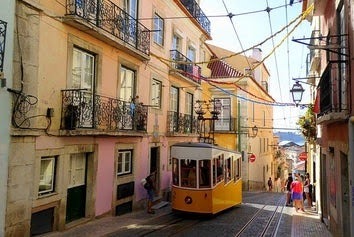

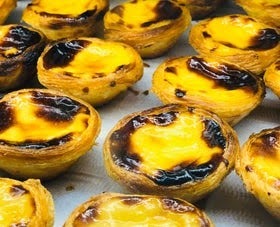



Lisbon, Portugal
New School in an Old Mansion
Our first humanitarian aid project was to help get a new private school ready for opening day in 1.5 months. An empty 10,000 square foot mansion built sometime around 1750 was a fun twist to a typical school layout, especially with an Olympic size pool. The original owners were obviously upper class elite, and included a huge ballroom & kitchen for entertaining. Imagine the extravagant parties especially with pool in the backyard.
Interesting features included the kitchen's 2 cooking hearths, and the secret corridors & stairwells on various levels. Thankfully, more recent owners made upgrades for some critical necessities - indoor plumbing & bathrooms, electricity, and semi-modern appliances. I can handle almost anything as long as I've got a comfy bed, hot shower & indoor toilet.
Children in foreign countries, especially those living in poverty or without family, don't have the support that children in the USA have. That's one reason I like volunteering with humanitarian projects for children.
School Library & Landscaping
Since nobody had lived in the home for 20 years, the landscaping was OUT of control. It took a couple days for us to sufficiently cut back the jungle - luckily, there was 16 of us. The back yard was already in great shape and only required minor pruning. Somebody obviously had been using the pool to enjoy a private retreat. The estate was clearly stunning in her time.....although, not a fan of the orange wallpaper in the parlor, above right!
Some of our group spent a day creating a library in one of the informal living areas. With over 100 books donated, the library would be used by children ages 5 and up. The books were all catalogued & organized by grade level. The orange wallpapered ballroom would be used as one of the classrooms. Gotta say....those orange walls wouldn't be one of my top 50 choices!
After we completed our assignments, the organization's owners would finish with furniture & school supplies. It would have been nice to be a teacher's aid for a couple days to see the children sitting at their desks, learning about history or the English language.
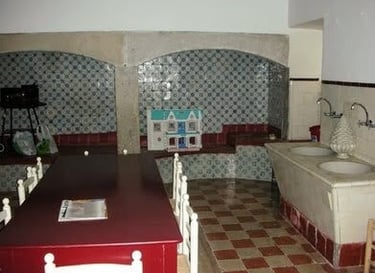

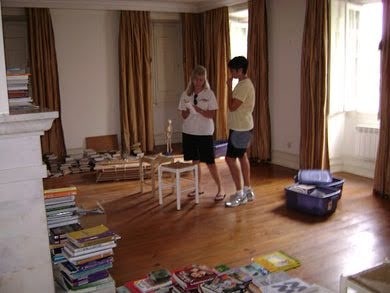

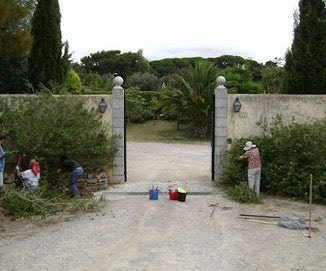

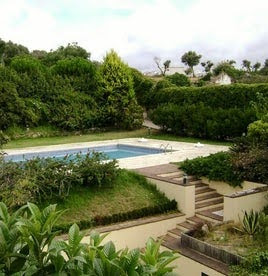

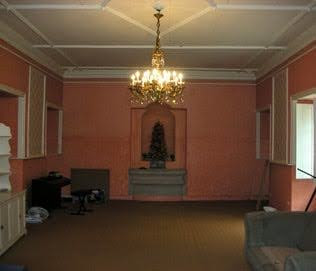

Humanitarian Aid for Children
Orphanage in Dire Need
Our second humanitarian aid project was an orphanage for children with disabilities. I'd been looking forward to helping in hopes of bringing some joy to these children living without parents or family. Sadly, the kids had been bused to another location for the weekend so we could work more efficiently. After a quick look around, we went inside.....and what we found was heart wrenching. It was overcrowded, and home to children from month old babies to teens.
We were told that private financial support was minimal so the teachers did what they could. The orphanage recently received some money for several smaller purchases, like shoes and a clothes washer & dryer. The building itself needed some serious repairs, cleaning, and a splash of love here & there to brighten up their day. One of the worst areas was the bathrooms, which I can only describe as a nightmare. (I'm a little bit of a clean freak in bathrooms & kitchens).
Several in our group had handyman skills while the rest of us cleaned, painted, and organized. Physically it was a lot of work....emotionally it was a hard pill to swallow. We created a list of repairs with 2 days to get it done. Looking at their little beds & cribs, along with the polaroid photos of each child on the wall brought me to tears. Before we left - we walked from room to room, praying for every child & teacher.
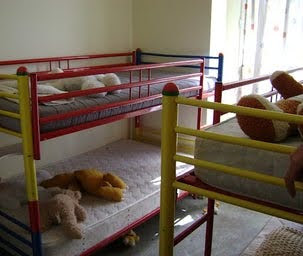





During our 2 week humanitarian aid trip to Lisbon, we spent our nights & weekends exploring this amazing city. Since ancient history was our first desire to see - we focused on ancient castles, the monasteries where the monks once lived, and soaring cathedrals that still held services today. We also mixed in a couple modern sites with all their glassy glitz.
Castelo de Sao Jorge: Saint George Castle
Location = Saint George Castle. Rua de Santa Cruz do Castelo, 1100-129, Lisbon Portugal.
The Castle sits on a hill above the city, with fortifications dating back to the 1st/2nd century B.C. Just in case you're brain didn't grasp the date - we're in A.D. So, WOW....that's like 2,200 years ago. The first occupants were the Iberians & Celtics & later the Romans. The last to conquer the Castle was the Portuguese in 1147, who took it from the Moors.
Since the 1100's, the Saint George Castle has been a royal palace, military barracks, archives, and today a monument. It wasn't until 1255 that Lisbon became the capital of the kingdom (Portugal), which runs along nearly the entire western edge of Spain.
What would life be like in that era? I know women wouldn't have had many options. Honestly, my first thought is about hygiene - or should I say lack of hygiene. That being said.... I'd have to be upper class with a bath tub & lot's of soap. For sure my husband, a Knight in the King's personal guard would be using my soap products as well.....every day. None of this splash water on your face and call it good. LOL.
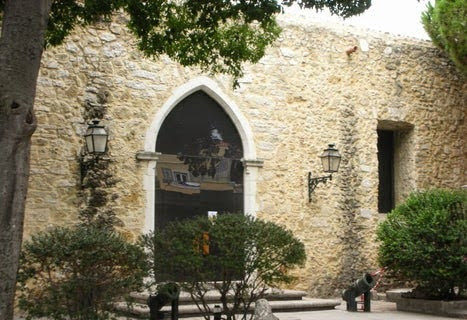

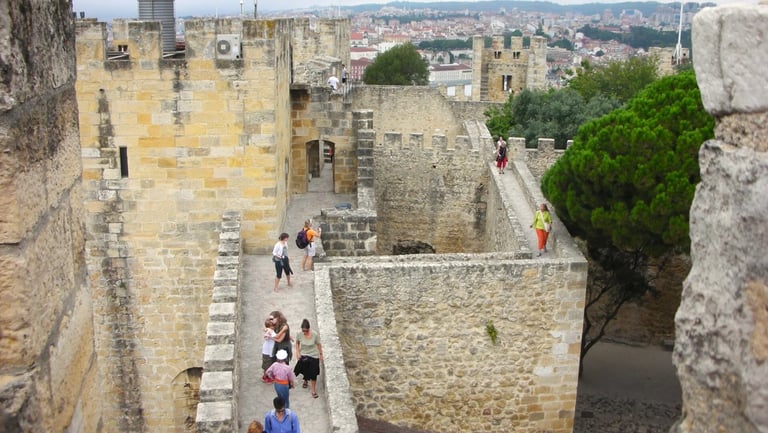

Sometime around 1300, King Denis I initiated some hefty renovations on Saint George's Castle - mostly to get rid of the Moorish designs. In 1373 they began building a wall around the castle on 3 sides, with 77 towers & 34-38 gates. What's left of the original Royal Palace can be seen by the main square. Also, the main entrance is accessed by a stone bridge over what used to be a moat. WAY COOL. I wish I could have seen it in it's glory days, but only for a day.
We followed a tour group & heard some interesting tidbits. Photo below middle: archers would stand in the archways & shoot their bows thru the vertical slits. This design protected the archers from incoming arrows. Below right: soldiers would run up the stairs and along the exterior walls to defend the castle. They'd pour hot tar or boiling water down upon the attackers trying to climb up. Sometimes they'd light the tar on fire making it impossible to climb up.
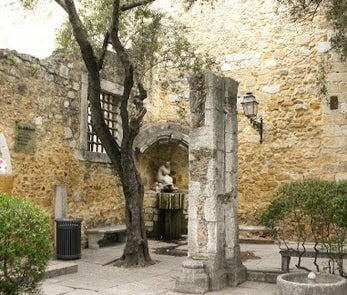

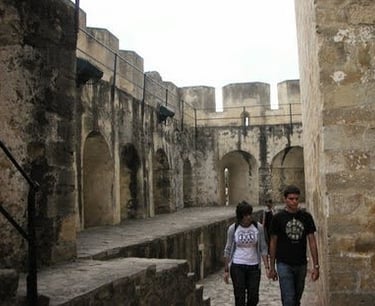

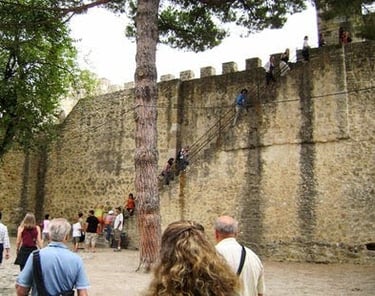

Exploring Lisbon
Location = Commerce Plaza. 1100-148 Lisbon, Portugal.
The Commerce Plaza, sometimes called Commerce Square, was built on the site of the old Royal Palace demolished by the 1755 earthquake. It was a vital hub for Lisbon's maritime trade as it overlooks the Tagus River. The archway below would welcome arriving visitors into the city. The arch is called = Arco da Rua Augusta, meaning arch of the street Augusta.
Down the entrance of the arch were buildings that once held government departments like the Ministries of Defense, Navy, Finance, and Colonies. Commerce Plaza is the largest public plaza on the continent, and today it's filled with restaurants, shopping, a museum and hotel.
In the center of the Plaza or Square in front is a statue of King Jose I on his horse, the ruler of Portugal beginning in 1750. I can't help but share - the king's full name = José Francisco António Inácio Norberto Agostinho. Whew, that's a mouthful. It was here that I saw my first ever Segway - a motorized stand-up scooter with 2 wheels which the Police were using.


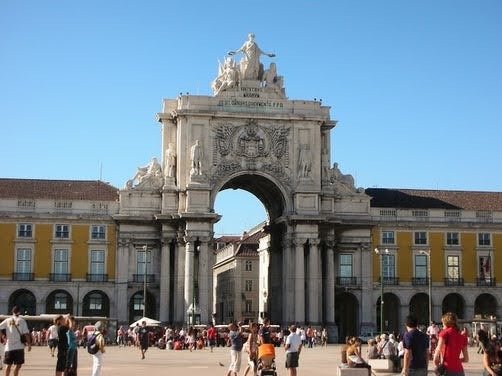

Praça do Comércio: Commerce Plaza
Location = Jeronimos Monastery. Praça do Império 1400-206, Lisbon Portugal.
During the Age of Discovery 1400-1600's, the Jeronimos Monastery was the leading symbol of Portugal's wealth & maritime power acquired from global trading. It's the most massive & extravagant structure I've ever seen - truly a masterpiece of engineering & design. There's inlaid gold, statues, pillars, fountains, and intricately carved details throughout - the cost of which I'm sure was astronomical. Construction began in 1501 and took 100 years to complete.
It's purpose was to honor Vasco de Gama's successful sea voyage in 1497 to India. From Lisbon to India's port is 5,997 nautical miles & at that time, it would have taken at least a month. Taxes alone from the spices he brought back paid for construction costs. The Jeronimos Monastery includes several chapels, above ground tombs of dead kings as well as the one for Vasco de Gama - photo up top. It was a little creepy thinking about a body inside.....but a spectacular work of art.
King Manuel chose the monks to live in Jeronimos Monastery so they could pray for the King's soul & provide spiritual aid to the sailors who would set sail to discover far away lands. For over 400 years the monks did their duty at the Monastery until 1833 when the religious orders were disbanded, so they had to vacate their home.
Church of Santa Maria de Belém
The Church of Santa Maria de Belem ("de" means from/of the place Belem), adjoins the Jeronimos Monastery, photo right, and is one of the most ornately decorated churches in the country. The Church of Santa Maria is still used for worship today.
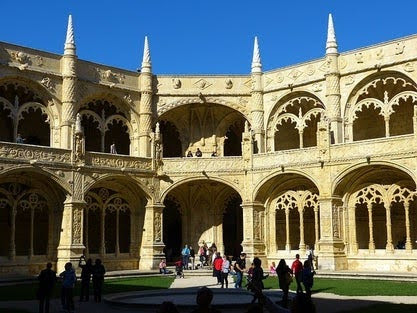

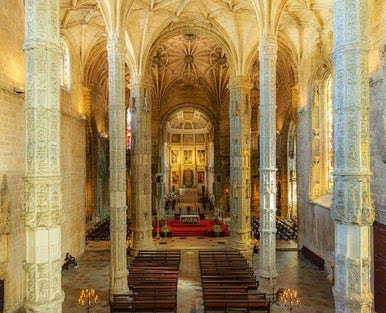

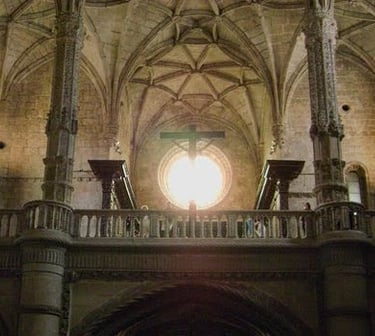

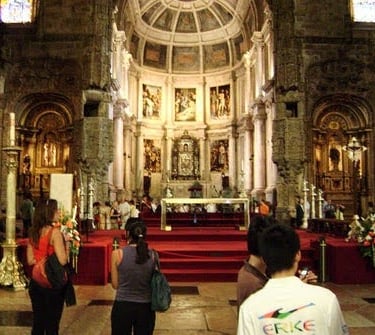

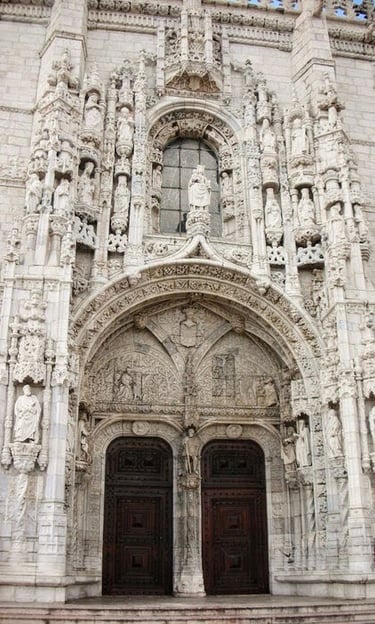

Jeronimos Monastery
Location = Park of the Nations. 1990-231 Lisbon, Portugal. The Park of the Nations district is a sparkling, modern gem. It offers international dining, concerts at the arena, the Oceanarium, and a scenic walkway along the Tagus River. This modern district is a showcase of glass & glitz. Beautiful architectural designs of monstrous buildings amidst cobblestone streets & walkways that have stood the test of time.
The Vasco da Gama Bridge is also in the background and it's the second longest bridge in Europe at 10.7 miles long, photo below center. I have to say it was a bit scary - since all 6 lanes of traffic are moving at top speeds of 120 km/hour = 75 miles/hour. Good Lord I'm glad that bus ride is over!
We took an hour to stroll along the river and read up on more history told at each of the sculpted statues. Next we're heading to the downtown area to soak up the old world charm of Lisbon.
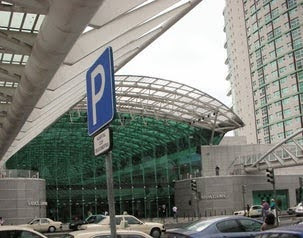

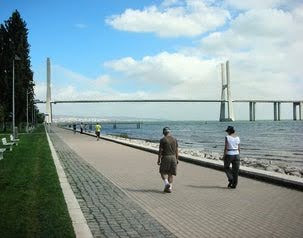

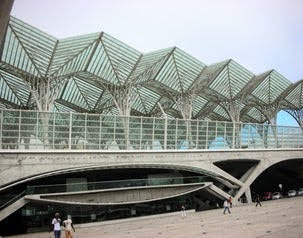

Parque das Nacoes: Park of the Nations
The City of Lisbon
Lisbon is a friendly city, especially if you can experience the joy of slowing down and soaking in the sights, the people, food, and music. There's a welcoming warmth & romantic pulse in Lisbon. Eat together, sip wine, laugh, and relax the Portuguese way.
Walk the cobblestone streets in the night air, and listen to the sound of traditional Fado music - a tune played by a guitar and 12-stringed instrument that originated in the early 1800's. Fado means "destiny" or "longing". See....very romantical.
Pssst....see the official guard below on the right? Some of the girls and I stood near him, talking about how handsome he was (in spanish since I didn't know the Portuguese word). We couldn't get him to flinch a muscle or crack a smile. It's like he's a statue.
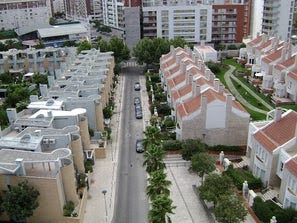

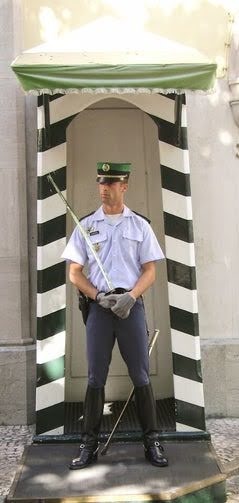

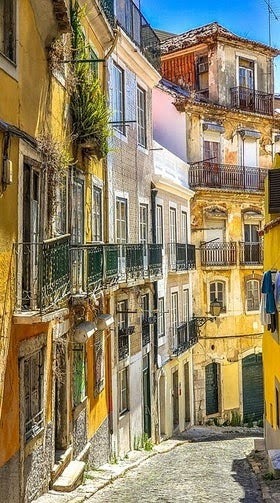

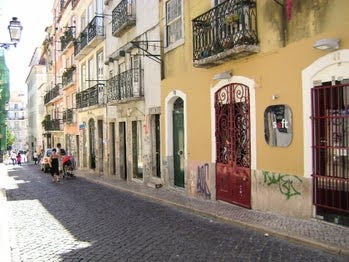

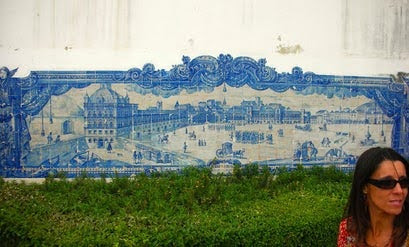



Column of Pedro IV at Rossio Square
Location = Rossio Square. Praça Dom Pedro IV, 1100 Lisbon, Portugal.
The marble statue of King Pedro IV stands In the middle of Rossio Square atop a 75 foot high column. There's also ornate, Romanesque water fountains at each end of the square, complete with statues that shoot long streams of water.
Rossio Square's floor is made of cobblestone, designed in the traditional sea-wave pattern. If you stand back at just the right angle, it looks like the cobblestones are 3-D waves.
The real magic happens after sunset. The lights come on and create a a soft warmth, as if it's filled with magical & romantic aura. You can see Rossio Square and the column, photo right.
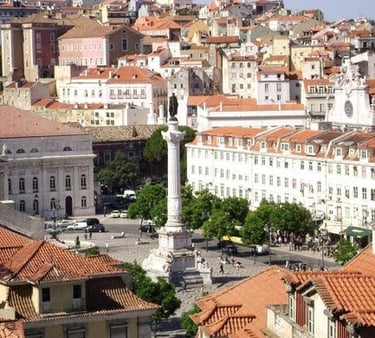



Santa Justa Elevator
Location: Santa Justa Elevator. Rua de Santa Justa, 1150-060, Lisbon Portugal.
The Santa Justa Elevator is in the middle of an alleyway. It's a gothic cast iron elevator that's 49 feet high with a viewing platform on top. As we climbed up the inside stairwell & reached the platform, I looked down before my last step. Oh crap.... TOO high.
Since my fear of heights just kicked in, I had to maneuver my way down with shaking legs. It was probably psychological since I just had that SERIOUS freak-out at Saint George's castle a couple days ago. My friends told me I missed some nice views at the top of Santa Justa's platform.
More Fun Things to Do
Ancient underground Tunnels of the Roman Galleries.
The secret garden of Estufa Fria.
The Church of São Vicente de Fora and overlooks the Tagus River, photo right.
Flea markets - from antiques to fresh produce: Mercado de Santa Clara & the Feira da Ladra.
Basílica of Estrela! - climb to the roof for awesome views, and see the church dome & bell towers.
Rua Verde - take a walk down the Green Street.
Roman Theater - built when Lisbon was Roman occupied and abandoned in the 4th century & later buried.
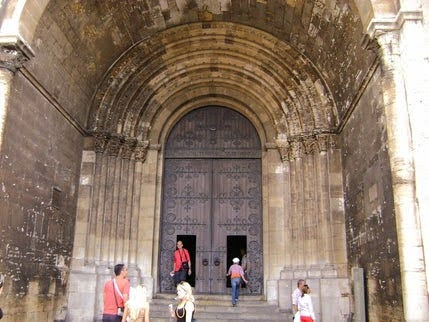

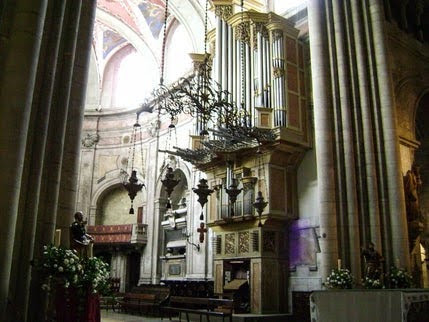

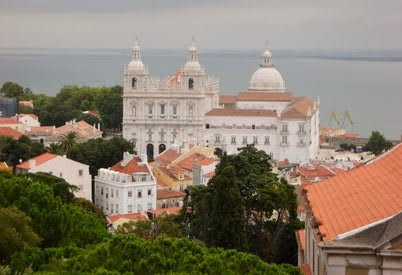

Lisbon Cathedral
Location = Lisbon Cathedral. Largo da Sé 1, 1100-585, Lisbon Portugal.
The Lisbon Cathedral dates back to the 1100's, and is one of the oldest Roman Catholic churches in Portugal. After the 1755 devastating earthquake, the Lisbon Cathedral church underwent extensive repairs. Since the repairs were done hundreds of years after it was first built, the building received touches of more modern styles. The architectural style is now a blended mash-up of gothic, baroque, neoclassical, and Romanesque.
The Lisbon Cathedral resembles the shape of a cross and displays the tombs of King Afonso IV and his family, who ruled from 1325 to 1357. It's still used as a current place of worship for the community.
Vacation Travel Tips
Average temps high/low = Summer 83/62 degrees F. Winter 58/47.
MUSTS: passport, universal adapter to plug in your gadgets, take minimal cash & exchange dollars into euros before travel for best rates, travel credit card or pre-paid debit card with reasonable lower limits.
Safety - be aware of surroundings. Use a front backpack or diagonal purse that's zipped - make it hard to grab/be pick-pocketed. Carry minimal money. If you're alone - don't go down alleys & sit next to the bus driver. Don't wear expensive jewelry. Don't carry phones in your pocket. Hotels: put valuables in their safe & hide money in a bible in a bottom drawer. Don't stand out, blend in.
Hiking - backpack items: cell phone, water, bug spray, sunscreen, whistle, flashlight, pocket knife, and light jacket.
Poisonous, land - Brown recluse & black widow spiders: they like dark & quiet places like outhouses & old shoes. Scorpions: found under rocks or in old shoes. Processionary caterpillars: usually in pine trees. 2 Viper types: like to be in rural areas away from humans.
Poisonous, water - Portuguese Man of War: has bright blue/pink bubble that floats on the water with 6 long tentacles. Sharks are rarely seen.
Wild animals - wolves, wild board, and the lynx: typically shy around humans, but you might see them in wilderness areas.
Trash - Pack out what you pack in.
Travel – take a buddy & tell someone your travel plans.
